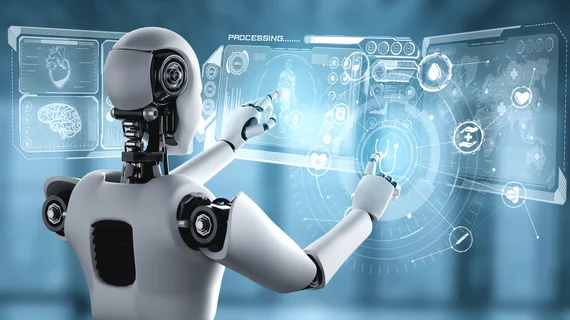Many medical students believe AI poses a threat to the radiology job market
As artificial intelligence continues to cement itself into the future of radiology, it is important to understand how current and upcoming radiologists feel about the technology.
A new paper in Academic Radiology that compares how medical students, radiology trainees and radiologists perceive AI’s role in their future revealed differing opinions on the matter. While current radiologists and trainees are either prepared to or are already embracing AI, a significant portion of medical students still view AI as a threat to the radiology job market, according to the meta-analysis.
“AI has the potential to automate routine tasks in radiology, such as image interpretation and report generation, allowing radiologists to focus on more complex and challenging cases. These advancements in AI have raised questions about the future role of radiologists and the potential impact on the demand for radiology services,” corresponding author Amir Hassankhani, from the Department of Radiology at Keck School of Medicine, University of Southern California, and colleagues explained.
According to the meta-analysis, which included 21 studies related to perceptions of how AI could change radiologists’ scope of practice, 22.36% of medical students surveyed reported that concerns over AI deterred them from pursuing a career in radiology and 42.66% viewed AI as a threat to the specialty’s job market.
In contrast, less than 10% of trainees and practicing radiologists reported feeling threatened; those individuals also demonstrated having a better basic understanding of AI concepts relative to radiology.
The difference in opinions could be attributed to medical students’ limited exposure to AI, the authors suggested.
“Medical students are still in the early stages of their medical education and may lack a comprehensive understanding of the practical applications and limitations of AI in radiology,” the group explained. “As a result, they may perceive AI as a disruptive force that could potentially threaten their future career prospects, leading to higher levels of concerns.”
Integrating AI curriculum in medical students’ education could represent an opportunity to ease their anxiety over the matter, the group suggested. This could involve increasing direct exposure to AI in practice in addition to having radiologists share their own positive experiences with using the technology in their everyday workflows.
“By implementing these recommendations, the field of radiology may better prepare for the integration of AI, ensuring that radiologists and other practitioners have a positive outlook and a realistic understanding of its impact,” the authors concluded.
The study abstract is available here.

